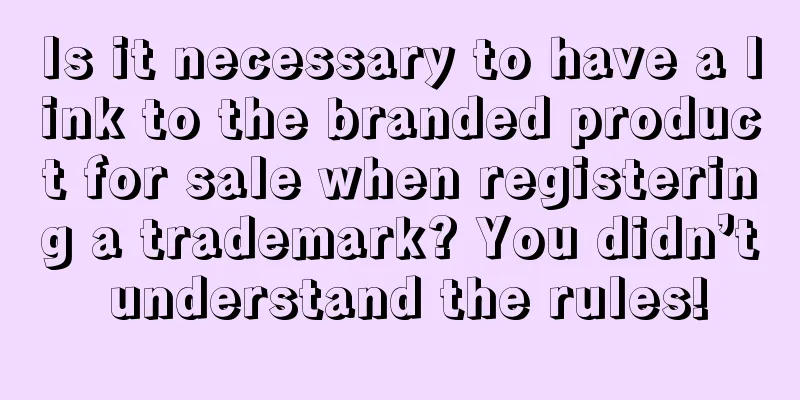After Trump, the "new official", took office, he focused all three of his efforts on tariffs . On March 4th local time, the new US tariff policy officially came into effect, doubling the cumulative tariff rate on Chinese goods to 20%. This is another "cost blow" following the previous 10% tariff increase. According to industry sources, after Trump's first round of tariffs were implemented in early February, a large number of small and medium-sized sellers have fallen into the dilemma of "double slump in both order volume and traffic". It was observed that under the cumulative effect of tariffs, cross-border sellers mainly operating on the US site experienced a sales winter in February. Since mid-to-late February, sellers on multiple cross-border e-commerce platforms have reported a serious decline in order volume: "Amazon's order volume dropped by 50% in February, but advertising costs tripled." “Stop talking about giving traffic to Temu. Our orders for Temu’s US site aren’t much better.” "Based on the sales volume in 2024 and previous years, it feels like the storage costs are going to explode." Among them, sellers in some categories even had "zero orders" and recorded the largest single-week drop in recent years. The sales curves posted by multiple sellers show that in February, which was full of uncertainty, the sales of many sellers plummeted like a "deflated ball". Especially in the middle and late part of the same month, the trend of a cliff-like plunge in platform traffic was more obvious. In addition to seasonal factors, the industry generally believes that this situation is mainly the result of the following factors: 1. Platforms tighten compliance supervisionAmazon strictly checks sensitive words on Valentine's Day, Temu cracks down on accounts that have lost their accounts, and TikTok's US stores have removed a large number of windows... February is the beginning of the year's risk control cycle, and news of various platforms tightening compliance reviews has emerged one after another. This has not only caused huge losses to the sellers involved, but also caused panic among some sellers, causing them to "not be interested in selling" and focus on "strictly preventing censorship." 2. Intensified competition during the new product promotion period After the Chinese New Year, many sellers choose to launch new products in February. With the influx of a large number of new products, market competition has intensified again, and stores with unattractive products or lack of effective promotion methods are buried in this new product promotion period. 3. Consumer inflation expectations rise, purchasing power declines Further in-depth analysis shows that in addition to the above market factors and seasonal factors, the order volume in February was also largely affected by the adjustment of US tariff policies. According to the survey data of the University of Michigan in February, due to concerns about Trump's policies, US consumers' expectations for the long-term inflation rate in the next 5 to 10 years were further revised up to 3.5% , the highest level since April 1995. Industry insiders revealed that in order to cope with the tariff challenges, some cross-border e-commerce platforms have raised the prices of some low-priced goods in February, causing American consumers to be more worried about possible price increases in goods in the future, delaying or reducing their purchases. Now on March 4, another tariff policy of the United States came into effect, and many sellers' sales expectations for this month have also declined. Some sellers even said bluntly: "With the implementation of the 20% tariff, the market reshuffle is accelerating, and the industry elimination rate may rise again in 2025. Only two types of sellers can survive: either have a high-quality supply chain or understand the trend bonus ." In the short term, rising costs and market fluctuations are inevitable, but in the long term, through long-term paths such as supply chain reconstruction, diversified layout and technological innovation, sellers still hope to find new growth points in the wave of de-globalization. At this time of collective anxiety in the industry, the 4th CHWE Global Cross-border E-commerce Exhibition will join hands with 3,800+ suppliers, 80+ global platforms and representatives from many leading companies in the industry to hold a number of industry forums, aiming to help sellers break through growth bottlenecks in all aspects from marketing strategies, technological empowerment, trend interpretation, etc., and prepare for the battle at the beginning of 2025. 👇Scan the QR code below to sign up now! In response to the soaring costs and supply chain shocks caused by the tariff storm, this article will reveal the three highlights of the exhibition: Highlight 1: Get the latest trends and get online Q&A from top experts Those who observe the situation are wise, and those who follow the trend are smart. With the trend of tariff increase again and platform policy tightening, the industry is facing frequent unstable factors and the risk of going overseas is increasing. How should cross-border sellers respond to the changes and seize the development opportunities? The 4th CHWE Global Cross-border E-commerce Exhibition brings together outstanding representatives of overseas companies from various fields, deeply insight into and analyzes cutting-edge industry trends and effective operational strategies , and reveals the development trends and business opportunities of various markets for sellers. There are also executives from popular cross-border e-commerce platforms such as Amazon, Temu, SHEIN and TikTok Shop who interpret the latest official policies online , including Amazon's new seller benefits, TikTok Shop's cross-border self-operation methodology, etc., to help sellers cope with policy changes and seize traffic opportunities.
Highlight 2: Resource Express, 3800+ brand factories gathered on site 70% product selection, 30% operation. Affected by the intensified market competition and the cost pressure brought by the tariff increase, the trend of "product selection determines life and death" in cross-border e-commerce has become increasingly obvious. At the same time, from the support policies recently launched by various platforms, it can be seen that the industry's traffic resources are increasingly tilted towards companies with supply chain advantages. But to this day, despite the support of China's vast supply chain resource library, many sellers are still troubled by "product selection". Based on this, the 4th CHWE Global Cross-border E-commerce Exhibition brings together the national manufacturing industry belt, with 10 special industry pavilions and 3,000+ factory brand exhibitors , covering 15 major categories and special industry categories such as home furnishings, maternity and baby toys, shoes and clothing, luggage and fashion, beauty and personal care, and festival gifts and stationery, providing participating sellers with a comprehensive and high-quality supply selection.
Highlight 3: AI technology empowers and helps reduce costs and increase efficiency in all aspects
Innovation and change, technology first. In 2025, with the emergence of DeepSeek, AI technology is reshaping the cross-border e-commerce industry at an unprecedented speed. The industry has formed a consensus that in the era of big data, whoever can get a piece of the AI tool cake first will be able to occupy the commanding heights in the new round of competition. How to use it specifically? The 4th CHWE Global Cross-border E-commerce Exhibition will focus on the theme of "AI + Cross-border" and invite a number of big names to the scene to explore and think about the application of AIGC in the cross-border field , dismantle the methodology of using AI quantitative models for efficient market research and product selection, and reveal the core logic of overseas brands using big data + AI to build global product and brand power. Under the double blow of tariff policy and industry reshuffle, cross-border e-commerce in 2025 will enter a deep-water competition era of "technology-intensive + compliance-driven" , and refined operations, supply chain advantages and the use of AI tools will become the key to survival. At the 4th CHWE Overseas Cross-border E-commerce Exhibition, there will be different forums for in-depth discussions on the above trends. More exciting content can be found at the conference site, March 20-22 at the Shenzhen Futian Convention and Exhibition Center, and we will see all the sellers!
|










